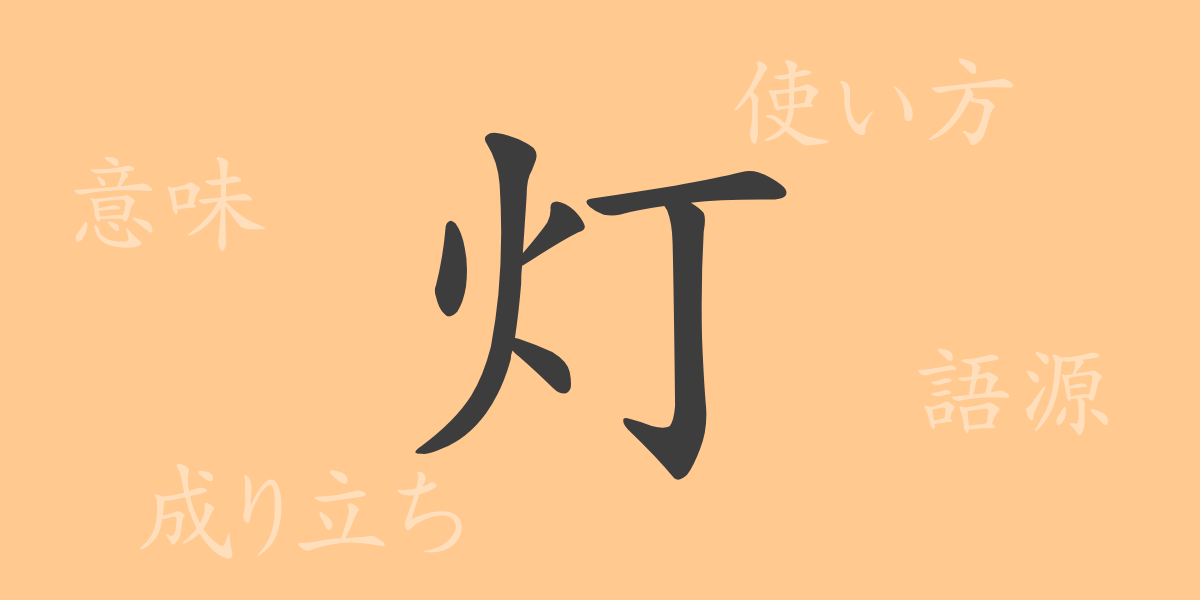The character ‘灯(とう)’ beautifully illuminates Japan’s nights, bringing warmth and a profound sense of presence that echoes through Japanese culture and history. This article delves deep into the Kanji ‘灯’, exploring its etymology, meanings, usage, and related phrases to uncover its allure.
Origins of ‘灯(とう)’
The Kanji ‘灯’ is formed from the combination of ‘火’ (fire) and ‘丁’ (which symbolizes an object surrounding the fire). Originally, maintaining fire was a crucial part of daily life, and this character represented tools used to safely manage fire. Over time, ‘灯’ evolved to signify the act of lighting and the light itself.
Meaning and Usage of ‘灯(とう)’
‘灯’ refers to an object that emits light or the light itself. It is also used metaphorically in phrases like ‘灯り(あかり)’ or ‘明かり’, and symbolically as in ‘希望の灯り’, representing finding hope in darkness.
Readings, Stroke Count, and Radical of ‘灯(とう)’
The Kanji ‘灯’ has multiple readings, used according to different contexts:
- Readings: On’yomi ‘トウ’, Kun’yomi ‘ひ’, ‘あかり’
- Stroke count: 6
- Radical: 火部(ひへん)
Phrases, Idioms, and Proverbs Using ‘灯(とう)’
‘灯’ appears in many idioms and proverbs, each showcasing the richness of expression in the Japanese language:
- 提灯に釣鐘(ちょうちんにつりがね) – A proverb indicating a mismatch or incongruity.
- 灯台下暗し(とうだいもとくらし) – An idiom expressing how easy it is to overlook things that are close to us.
Conclusion on ‘灯(とう)’
The commonly used Kanji ‘灯’ is intricately connected to our lives, enriching many phrases and expressions. Its simple appearance belies a deep significance and history. Reflecting on the sentiments and stories embedded in everyday usage of ‘灯’ allows us to rediscover the profound depths of language.

























